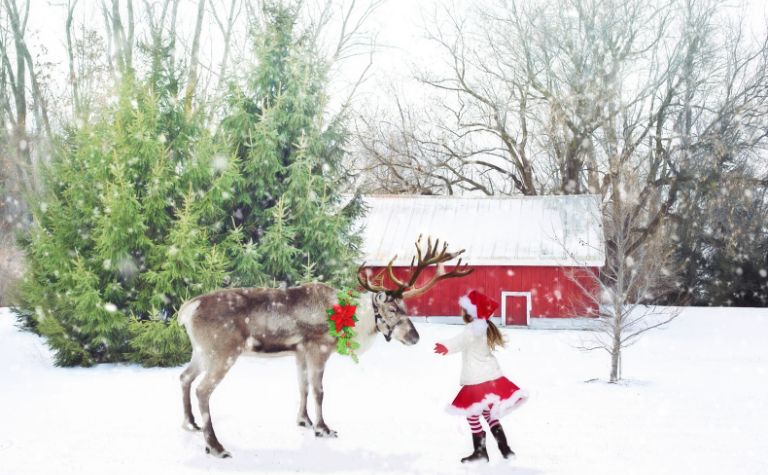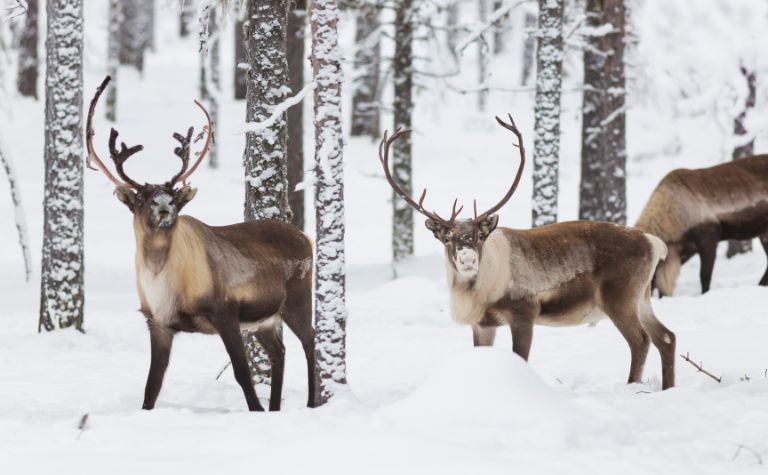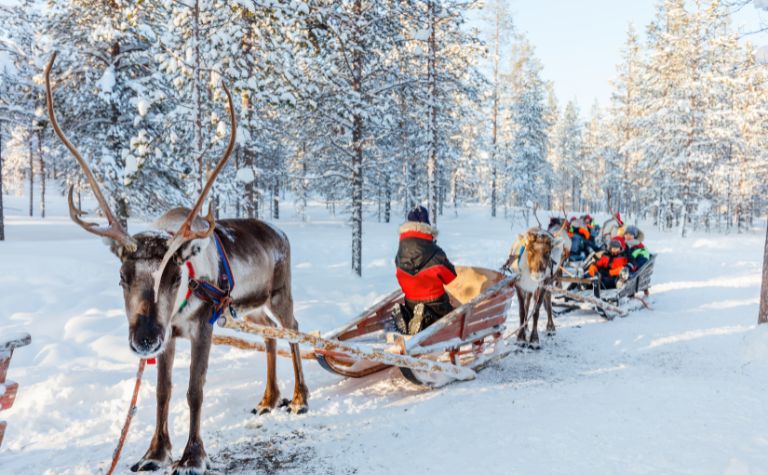Christmas traditions vary widely across the world, and it’s easy to be surprised by how different cultures celebrate it. Scandinavia is one of the places with peculiar and almost magical Christmas traditions.
One of those traditions is having a Christmas feast on December 24th, which can seem a bit odd to many foreigners.
In Scandinavia, people traditionally celebrate holidays on the eve of those holidays. Christmas day is also seen as a holy day; people only go to church and reflect on what Christmas means. Additionally, a new day would begin after dusk throughout history, adding to the reasons.
This article gives an overview of why Scandinavians celebrate Christmas earlier than most countries. It will also look into the history of that tradition and how it works today in order to give a clear explanation of this fascinating tradition.
Finally, it will outline some of the traditional Christmas foods that Scandinavia serves on Christmas Eve.
Also, see What Does Santa Ride Instead of Reindeer In Finland? to learn more.

Traditional Celebration Day
In Scandinavia, holidays are always celebrated on the eve of the holiday and not on the day of the holiday.
For example, Midsummer is celebrated on Midsummer Eve and not on Midsummer Day.
Similarly, for All Saints’ Day, Scandinavians place candles on the graves of their family members on the eve of the day instead of on the day itself. [1]
Likewise, Scandinavians have Christmas feasts, parties, and celebrations on Christmas Eve instead of on Christmas Day. The family gathers, eats, drinks, and exchanges gifts.
Traditionally, a male family member dresses up as Father Christmas and distributes gifts to the children.
There is no Santa Claus who enters through the chimney and eats milk and cookies like in the USA. [2]
The exact time when celebrations start varies from country to country. For example, it’s 6 p.m. in Sweden and 5 p.m. in Norway.
Christmas bells usually ring out, and celebrations begin. Businesses and bars are typically closed, and people focus on their families.
This timing exists because, throughout history, a new day began after dusk on the previous day. In other words, when it got dark, the new day began.
Therefore, it made sense to start celebrating on the day before, not just for Christmas but for other holidays as well.
In Norway, Christmas might come even earlier. Norwegians have something that is called Little Christmas on December 23.
On that day, people get together and prepare food, such as pinnekjøtt and rømmegrøt, for the Christmas celebrations. [3]
Some people start decorating their Christmas trees on Little Christmas, and some hide all their brooms.
They do this because there’s a traditional belief that Christmas coincides with the arrival of evil spirits. This includes witches and people who want to remove the brooms on which they fly.
Also, see What Do Kids In Sweden Leave for Santa? to learn more.

Christmas Day Is a Holy Day
After the feasting and partying on Christmas Eve, on Christmas day, it’s time to go to church and have a quiet day inside.
People typically go to church very early. In Sweden, the church service starts at 7 a.m., but long ago, it started as early as 4 a.m.
The ride to church would be a special event and a big part of the tradition, especially in Sweden.
In the olden days, people went to church on sleighs, with candles to light the way in the cold and dark December mornings.
This tradition created a beautiful and solemn procession.
The ride would be slow, and people could observe their neighbors as they all flocked to the local church.
The pace changed after the church service. People tried to get home as quickly as they could, as it was believed that the person who got home first would have a good harvest that year.
While there is no need to go to church on a sleigh drawn by a horse, people still go to church and stay home afterward.
They don’t visit friends and don’t receive visitors.
There is usually no feasting, and people eat leftovers from the previous day since they usually make more food than they can eat in a single day.
In modern times, there is also a strong tradition of watching the same Christmas movies every year.
Even though it is usually the same thing as last year, it’s quite common for a family to get together and rewatch it.
In Sweden, the most popular Christmas movie is Kalle Ankas Jul (From All of Us to All of You).
In Norway, it’s the Flåklypa Grand Prix (The Pinchcliffe Grand Prix) and Tre Nøtter til Askepott (Three Wishes for Cinderella).
A traditional celebration might also include dancing around the Christmas tree and singing traditional songs.
The Danish seem to particularly enjoy this, so someone visiting a Danish family for Christmas might be expected to join hands with the family, dance, and sing with them.
Even though the Danish language might be a tongue-twister, it’s still a unique experience.
Also, see Why Are Scandinavian Women So Beautiful? to learn more.

Christmas Food
Apart from the already-mentioned pinnekjøtt and rømmegrøt, there is an abundance of traditional dishes eaten on Christmas Eve in Scandinavia.
The Danish love pork, and the central piece on their Christmas Eve table is Flæskesteg, the Danish version of roast pork.
They often add duck meat to the table. However, Swedes seem to have a much bigger appetite.
On a Swedish table, you will find a greater abundance of dishes, such as:
- Meatballs (of course)
- Christmas ham
- Lamb
- Potatoes
- Sausages
- Bread
- Cheese
- Salmon
- Pickled herring
To the relief of a foreign visitor, surströmming is not part of a Swedish Christmas feast.
Of course, there are also various drinks, such as schnapps, wine, and lots and lots of beer.
Since there’s always more food than people can eat in one day, they will enjoy the leftovers for days to come.
It’s common to find people eating, for example, Christmas ham and bread for breakfast the following day and often the day after.
Conclusion
Scandinavians traditionally celebrate holidays on the eve of the holiday. This includes Christmas. Christmas day is reserved for going to church and staying home later.
Also, see Why Do Scandinavians Have Asian Eyes? to learn more.
